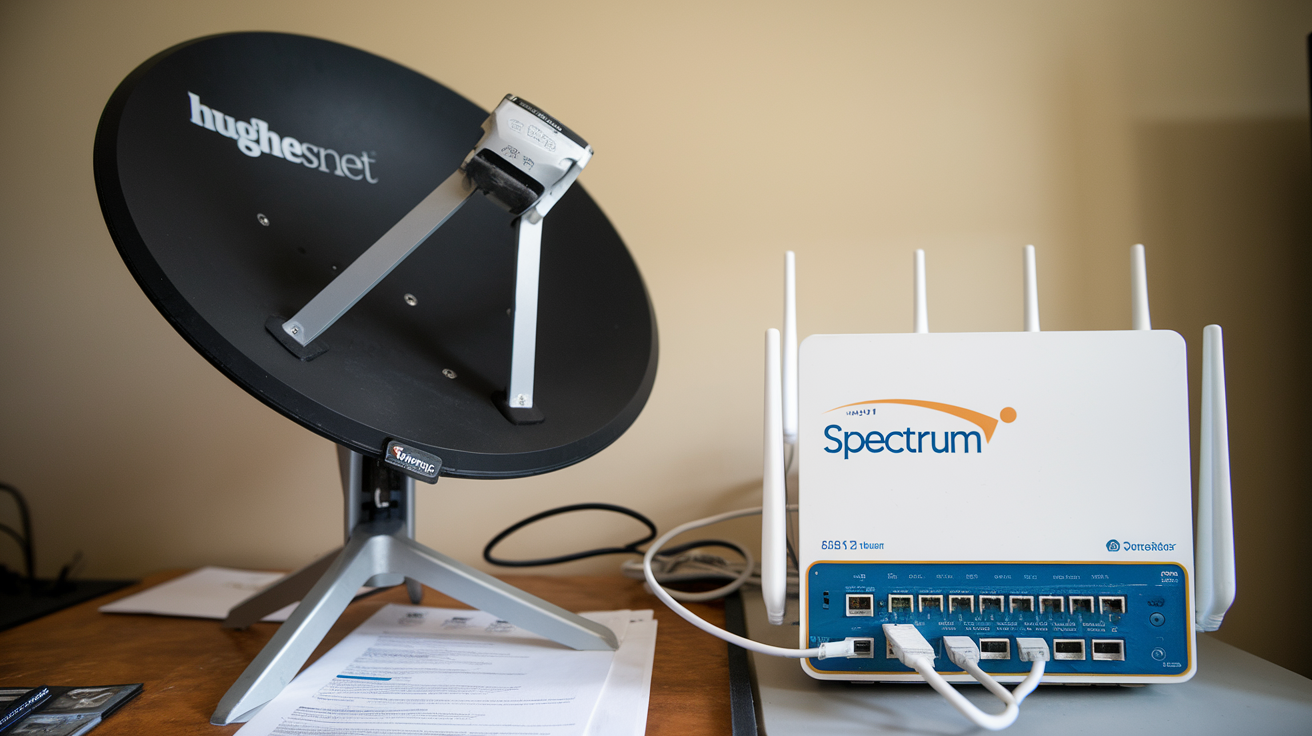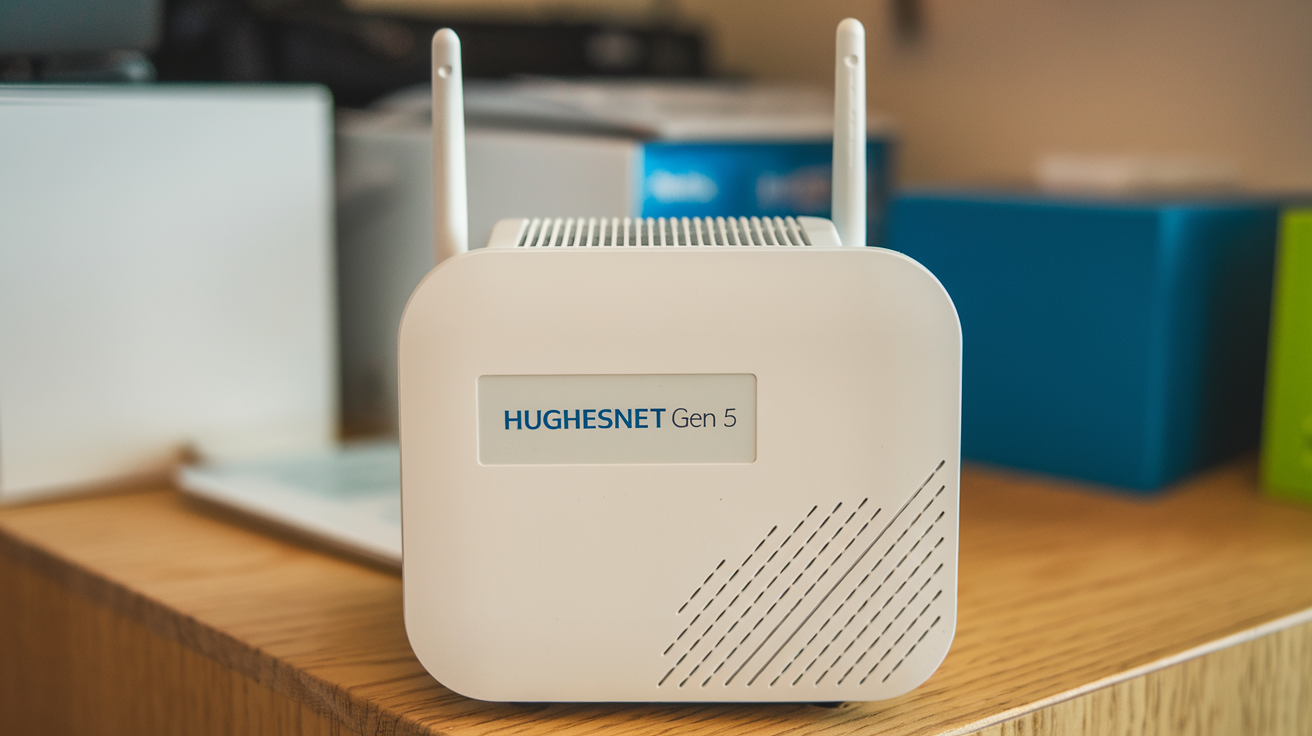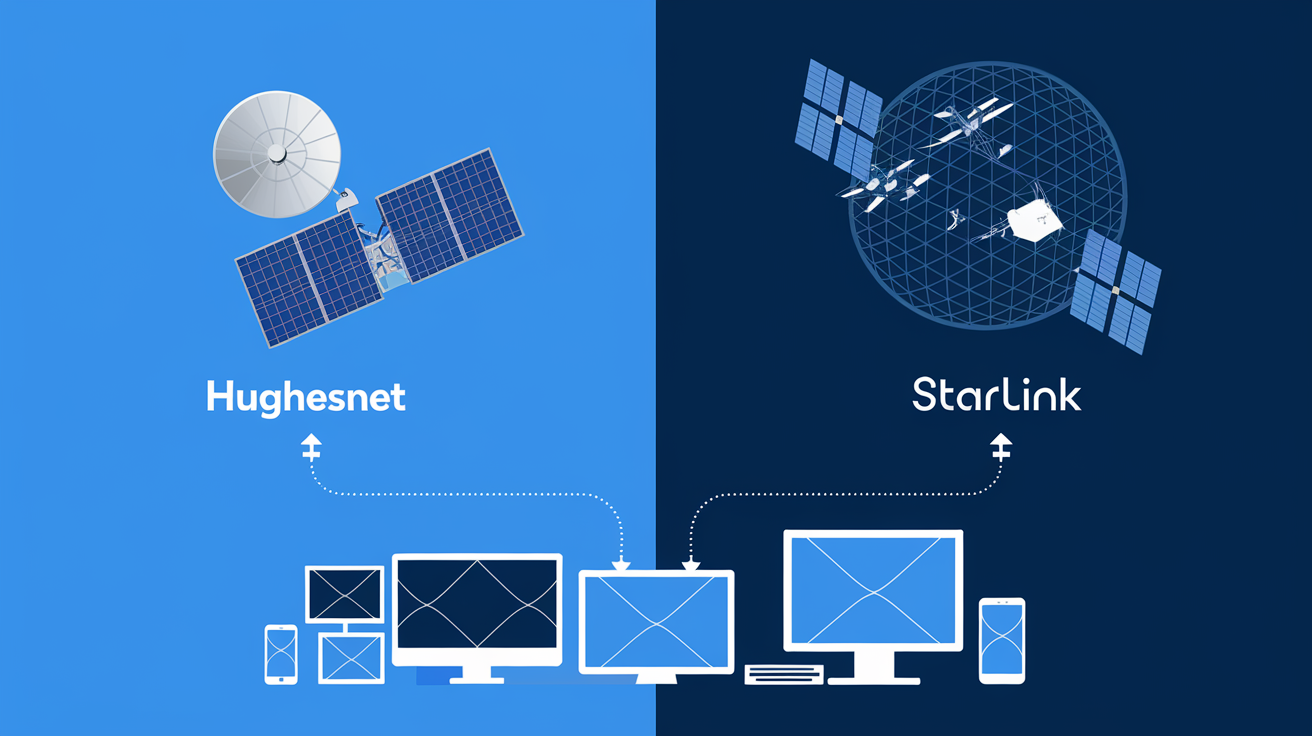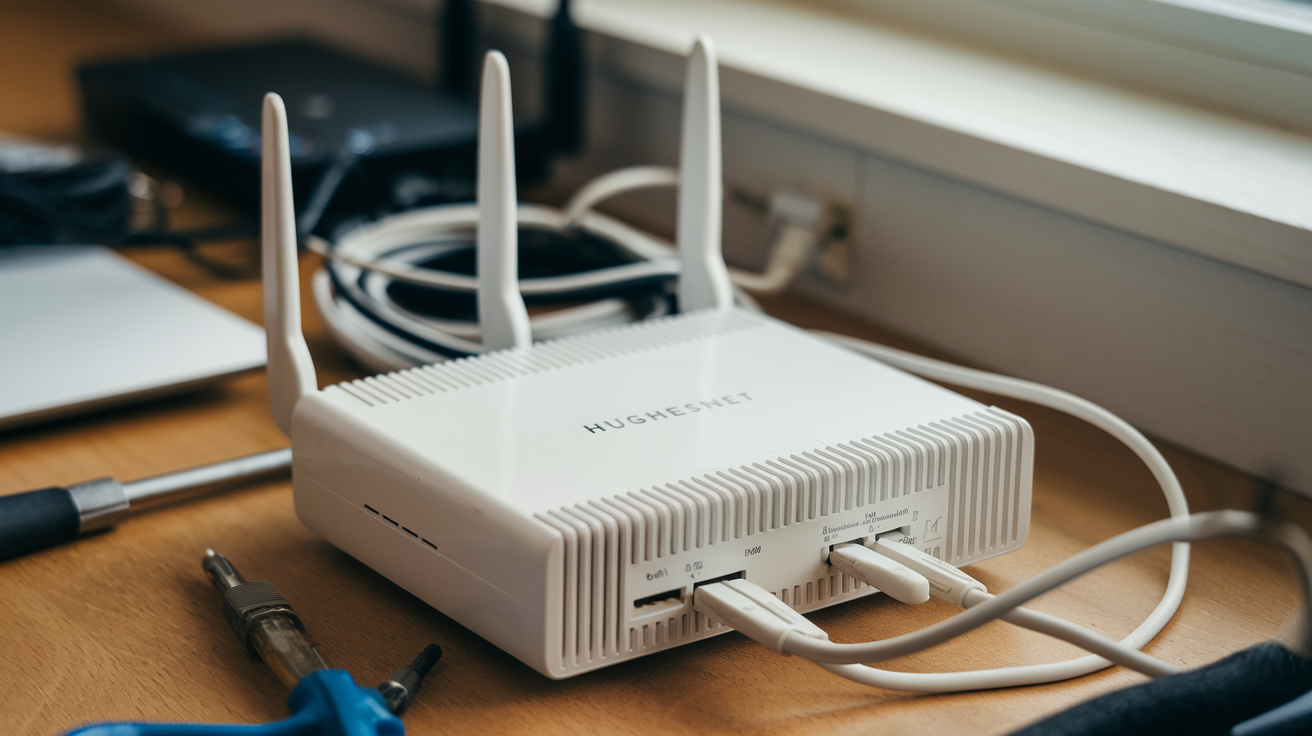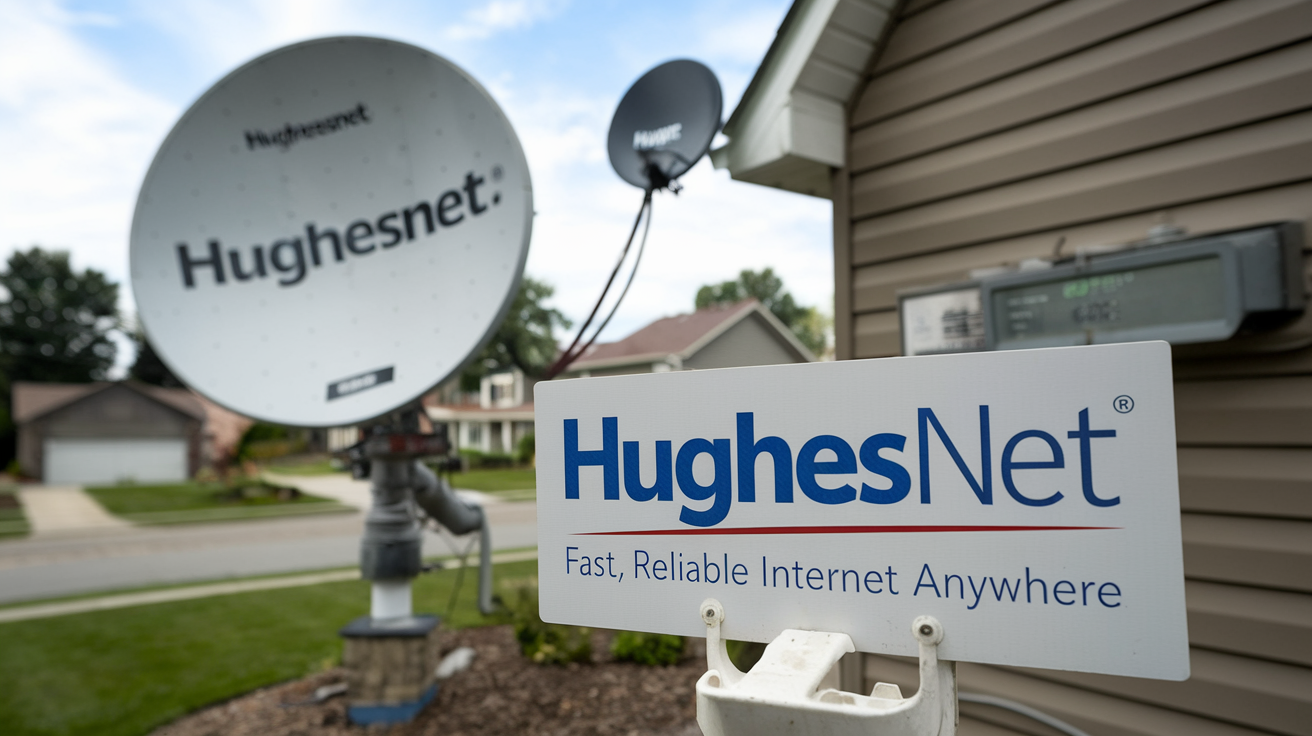-
Posted on: 08 Aug 2024
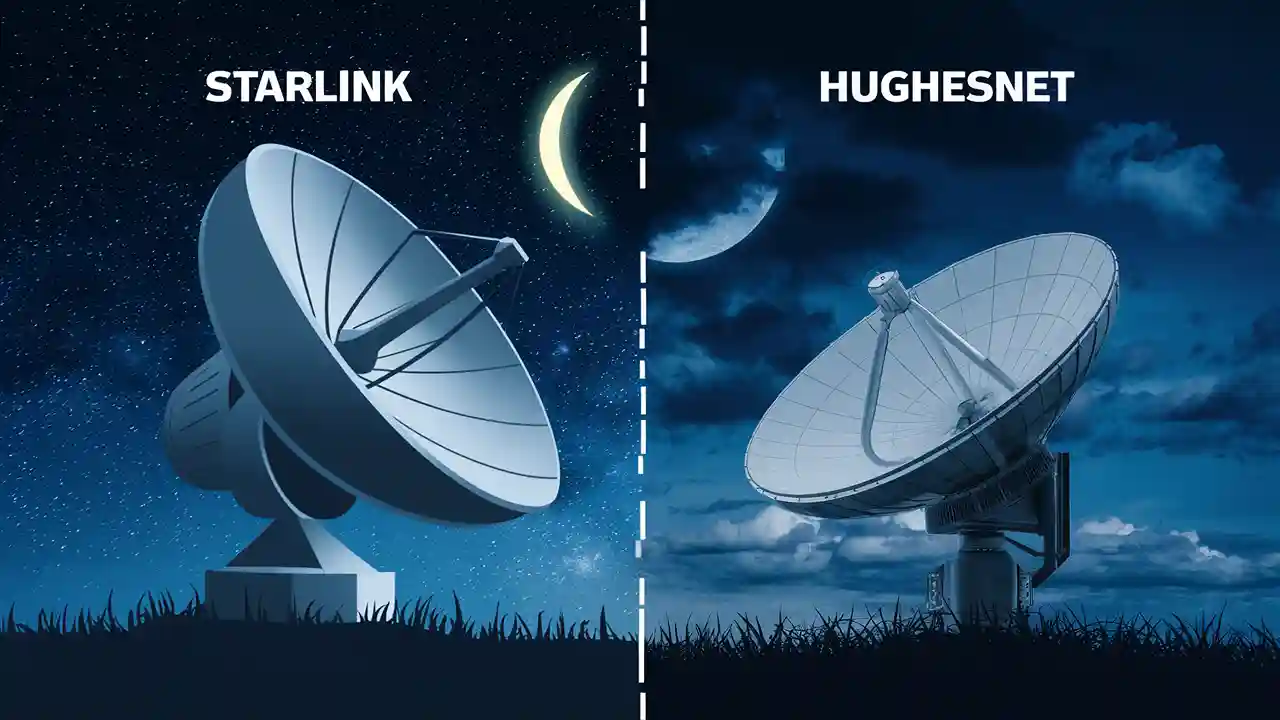
-
When it comes to satellite internet providers, two big names stand out: Starlink and HughesNet two satellite internet service providers that have been established to provide internet connections to people. They provide Internet services through satellite broadband and work to deliver services to rural and remote regions not covered by cable or fiber broadband connections. But when it comes to speed of delivery and latency, data quotas, and the price offered, Starlink and HughesNet could hardly be more different. Therefore, we conclude that, in essence, Starlink outperforms HughesNet and offers a more enjoyable experience to consumers. Here's why:
Speed
Starlink satellite internet is comparatively much faster than the HughesNet satellite internet. Currently, Starlink has set their speed range between 100/200 Mbps with latencies ranging from 20 ms in most regions. Even in real-world scenarios, it has been found that users are consistently attaining download speeds of well over 150 Mbps with Starlink. While the fastest HughesNet plan is available at 25 Mbps of download speed, the average download speed is significantly lower, especially during peak hours. This means that Starlink is over 5x faster than that of HughesNet. Such speeds are good for streaming HD videos, gaming online, and browsing the web without any hitches.
Latency
Latency is therefore the time taken to relay information to satellites in outer space and back. Lower latency means lower lag and delays. Starlink has one of the best latencies with values between 20-40ms which is almost equivalent to cable and fiber internet. This HughesNet latency could span from a notably slow 600ms and can go even higher, which results in slow connection, choppiness during video calls, or poor gaming experience. Starlink can deliver very low latency and it helps to make Zoom calls smooth, gaming fast, and browsing effortless.
Data Caps
Depending on the bundle you choose, HughesNet varies from 10 GBs to 50 GBs and has restrictions on the monthly data use. Should you surpass this, your speeds download within the 1–3Mbps range. Conversely, Starlink does not restrict the quantity of data that may be utilized or throttle consumers after they beyond the limit of data consumption. It lets one use as much data as feasible at maximum speeds free from any constraints. For use in activities requiring heavy data consumption such as streaming movies, playing games, numerous devices, and so on, all without the worry of paying extra costs for overbrowsing, Starlink is a more suitable option.
Weather Resilience
Starlink has over 1,500 active low-orbit satellites and can remain operational in stormy or rainy and snowy conditions that usually affect satellite connections. Nevertheless, HughesNet sometimes experiences a slower connection speed or a disconnect when the weather is bad. Finally, Starlink which has satellites orbiting in low orbits ensures that it delivers close to 24/7 uptime, depending on the customer’s location.
Price
Starlink’s prices for the required hardware and monthly services are higher compared to HughesNet’s offerings. When comparing Starlink to traditional broadband internet, the additional speed, low latency, no data limit, and even worse case scenarios, it is common to find that users find Starlink worth the extra money they have to pay. As mentioned earlier, it is surprising to find that Starlink undercuts its rival while providing a significantly superior service quality.
Expanding Network Capacity
Although HughesNet offers relatively low throughput, Starlink deploys new satellites to space every few weeks — more than 2,000 of them as of January 2023. Hence, Starlink is constantly adding capacity so that even more users can connect at faster rates. At the moment, no other satellite internet company can boast of having such a growing number of satellites or having such technical prowess as Starlink.
Ease of Setup
Starlink has a small antenna or dish while HughesNet has a larger dish that will require a user to install the dish on the roof. It can be installed in a matter of minutes rather than days which requires the help of a professional. But one of the main advantages of Starlink is that it is very easy to get online with it due to the plug-and-play system.
Customer Support
While customer and technical support satisfaction levels for both Starlink and HughesNet remain low according to consumer satisfaction ratings. However, Starlink plans to augment the support progressively through the use of an online chat option, the download of articles, frequently asked questions and other support materials. There are also more engaged user communities of Starlink customers and fans with groups and forums on the social platform Reddit.
All in all, Starlink outperforms HughesNet satellite internet when comparing the speed, latency, data throughput, weather durability, coverage, installation and usability, and overall satisfaction. Yes, Starlink is pricier than traditional satellite internet from HughesNet, as seen below. However, for the people who live in rural areas, work from home, or study remotely, RV users, or anyone who requires a high-speed and dependable internet connection, Starlink and its better satellite technology is the way to go now and in the future. Starlink specifically has grander plans for expansion, and for this reason, it is far superior to older-generation satellite internet providers.
